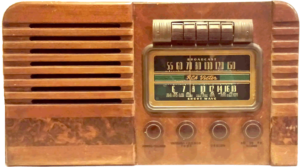 John Hays Hammond, Jr. (1888 – 1965) enjoyed a prolific career as an inventor, including being known as the “Father of Radio Control” for his pioneering work in that field.
John Hays Hammond, Jr. (1888 – 1965) enjoyed a prolific career as an inventor, including being known as the “Father of Radio Control” for his pioneering work in that field.
Born in San Francisco, he first moved as a young boy with his family to the Transvaal in South Africa, where his father, a trained mining engineer, gained wealth due to his early involvement in the prolific mines in that country. At the age of ten, they relocated to England, where Hammond began a great affection for the art and architecture of earlier times, which was to fuel a passion throughout his adult years.
Shortly after returning to the United States, his father took him along on a business trip to visit Thomas Edison’s famous laboratory in West Orange, New Jersey. Edison took a personal interest in the boy and gave him an extended tour of the facility in response to the many questions he was asking. Thereafter, they remained in frequent contact for the remainder of Edison’s life.
Like his father, young Hammond attended Yale University, and while studying at the Sheffield Scientific School there, he became enamored with the new field of radio waves. This brought him into contact with another famous American inventor, Alexander Graham Bell, who like Edison, remained a friend and mentor until Bell’s death.
After graduation in 1910, Hammond took an unlikely job working in the U.S. Patent Office. Edison had told him years before that inventing could be a “money-making proposition,” so he reasoned that there was no better place to learn which scientific endeavors were on the cutting edge than to work inside the Patent Office.
 Following this self-apprenticeship, he left and started the Hammond Radio Research Laboratory on his parent’s seaside estate in Gloucester, Massachusetts. Over the course of his professional career, he was awarded over 400 patents. Many of these began in radio control before extending to electronics, naval weapons, national defense, as well as various consumer products. Ironically, he would qualify on a short list prolific American inventors, not very far below the name on the top, his old acquaintance Thomas Edison.
Following this self-apprenticeship, he left and started the Hammond Radio Research Laboratory on his parent’s seaside estate in Gloucester, Massachusetts. Over the course of his professional career, he was awarded over 400 patents. Many of these began in radio control before extending to electronics, naval weapons, national defense, as well as various consumer products. Ironically, he would qualify on a short list prolific American inventors, not very far below the name on the top, his old acquaintance Thomas Edison.
RCA was the recipient of many of his core patents, and he served on its Board for over 25 years. Aside from his inherited wealth, his inventions brought Hammond additional fortune, together with a network of professional associates and well-placed friends in the upper tiers of American society.
Over a three year period ending in 1929, he oversaw the construction of his medieval-style seaside residence near that of his parents in Gloucester. It incorporated a broad collection of antiquities and 14th to 16th century architectural elements that he had personally acquired throughout Europe. It was both his personal residence and that of his wife, the former Irene Fenton Reynolds of Gloucester, but also headquarters of his commercial enterprise, the Hammond Research Corporation. Upon their deaths, and since there were no heirs, the residence was eventually transformed into a museum open to the public.






